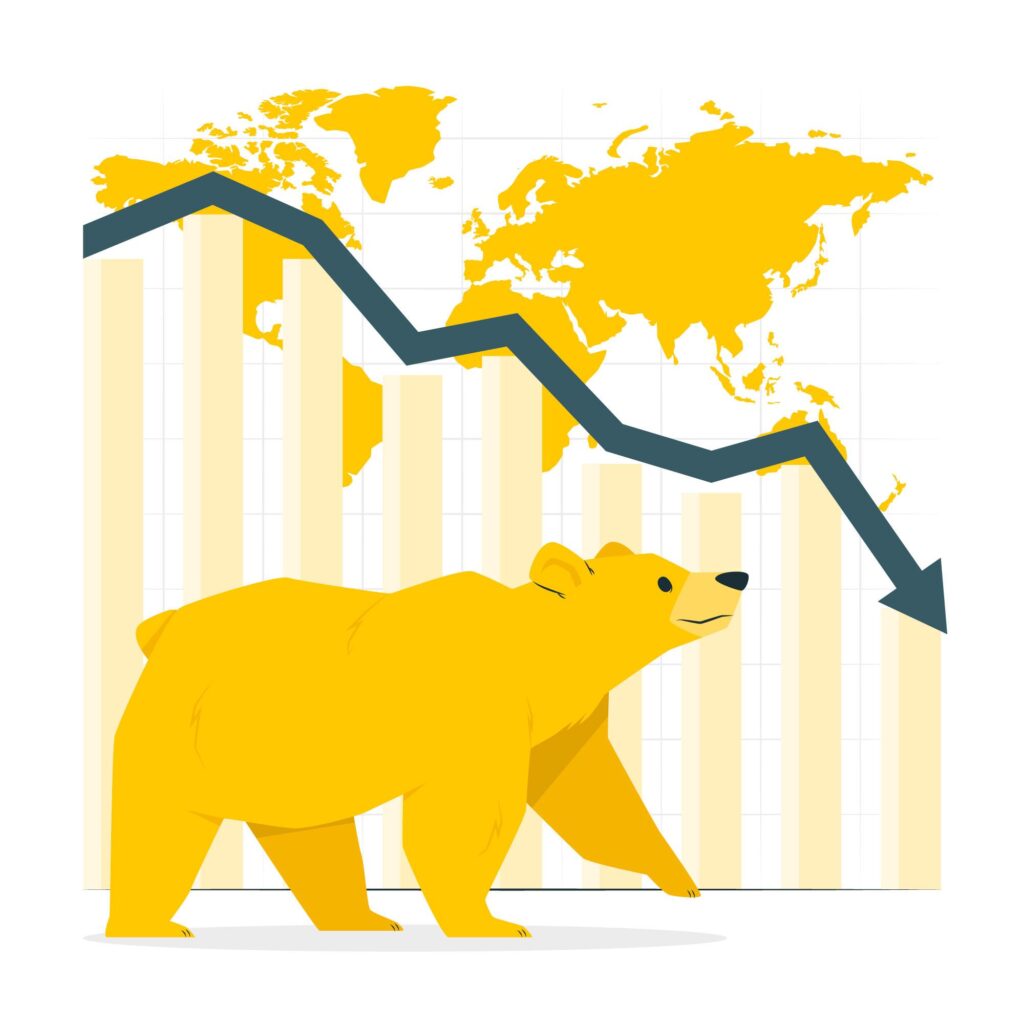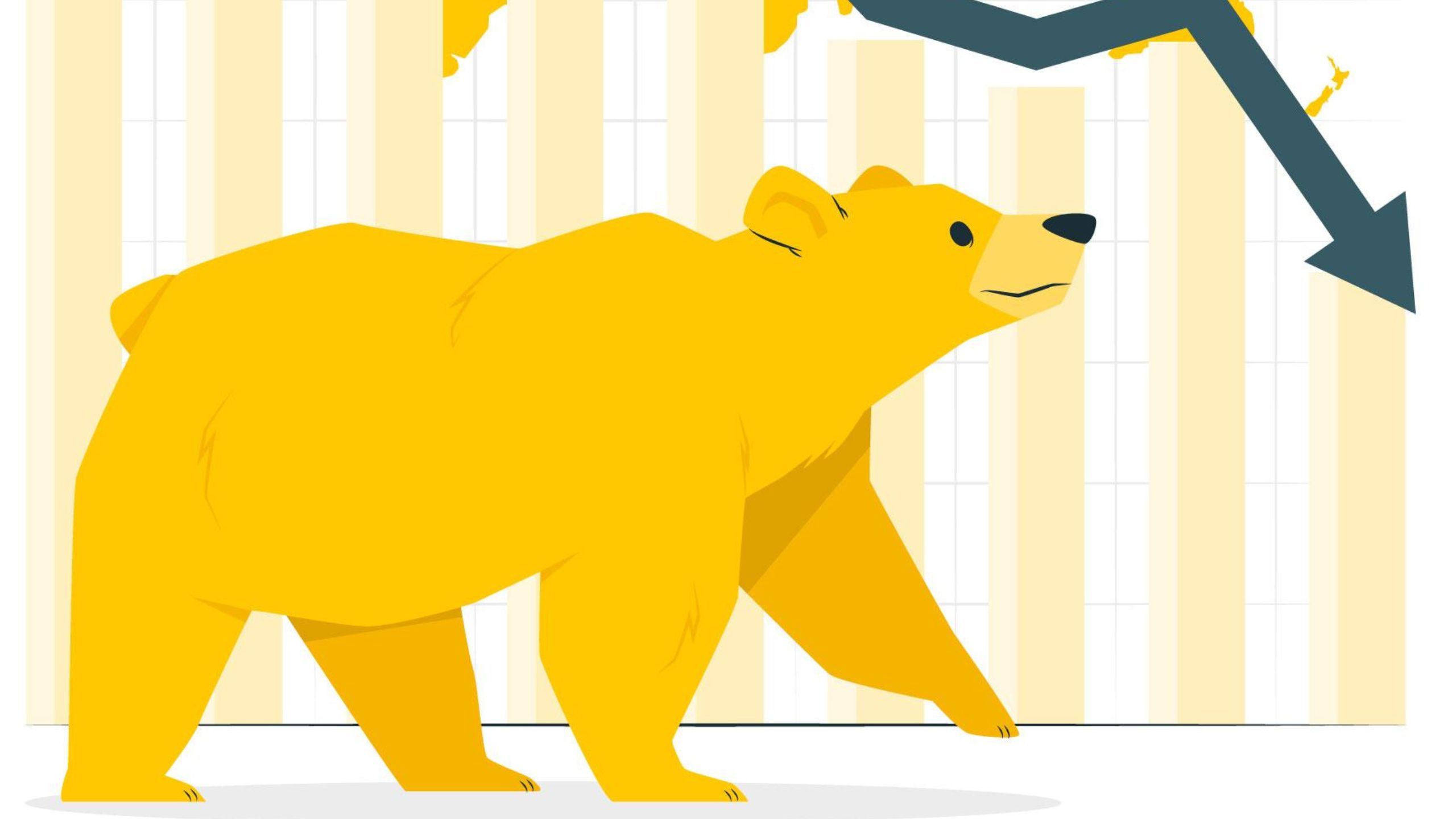Table of Contents
What is a Bear Market
Bear Market is when stock markets experience a fall in prices over an extended period of time. A bear market is generally declared when the prices fall 20% or more from its recent high. The fall in prices is accompanied with negative economic outlook, impending recession and negative investor sentiment. Bear markets can last for a few weeks or for several years.
Bear markets normally witness a 20% or more decline across the overall market or index like Nifty 50 over a period of time which is normally around 2 months or more. A bear market may be caused due to general economic downturns, recession, wars, pandemic, sector wise bubble bust (eg. real estate bust), changes in tax rates, demonetization. A slowing economy can also cause bear markets.

Phases of a Bear Market
The bear market generally has four phases.
- Phase 1 – The markets rise and then fall. The first phase is missed by the investors most of the time.
- Phase 2 – The stock prices begin to fall sharply. Trading volumes tend to drop. Panic selling begins.
- Phase 3 – Panic selling nears it’s end and speculators enter the market. The entry of speculators can lead to an increase in prices and trading activity.
- Phase 4 – Stock prices continue to decline but the fall is now slow. The low prices attract investors again who start buying securities.
Types of Bear Market
Secular Bear Market – A secular bear market is driven by long term economic conditions. Stocks experience selling pressure over long time periods in a secular bear market. A secular bear market can last for several years.
Cyclical Bear Market – A cyclical bear market is caused due to economic cycle fluctuations. A cyclical bear market is normally of a short duration and can last for a few months.
Bear Market History in Indian Stock Market

What should investors do in a bear market?
- A bear market offers a good opportunity for investors to increase their portfolio and for new entrants or beginners to start building a portfolio.
- Invest in quality stocks. Many a times in a bear market, blue chip stocks or large cap stocks are available at a discount. Make use of this opportunity to buy quality stocks.
- Do not indulge in panic selling. Many a times investors panic and sell their stocks at a loss. Bear markets should be used to buy quality stocks and average out the cost.
- Diversify your portfolio. If your portfolio is heavily focused on eg.IT stocks, use the bear market to buy quality stocks from different sectors like FMCG, automobiles, pharma, banking and financial services etc. A diverse portfolio reduces risk and provides better downside protection.
- Think long term. Hold on to your stocks & investments. The best returns are received when quality stocks are held for long term (i.e 5 to 10 years or more).



